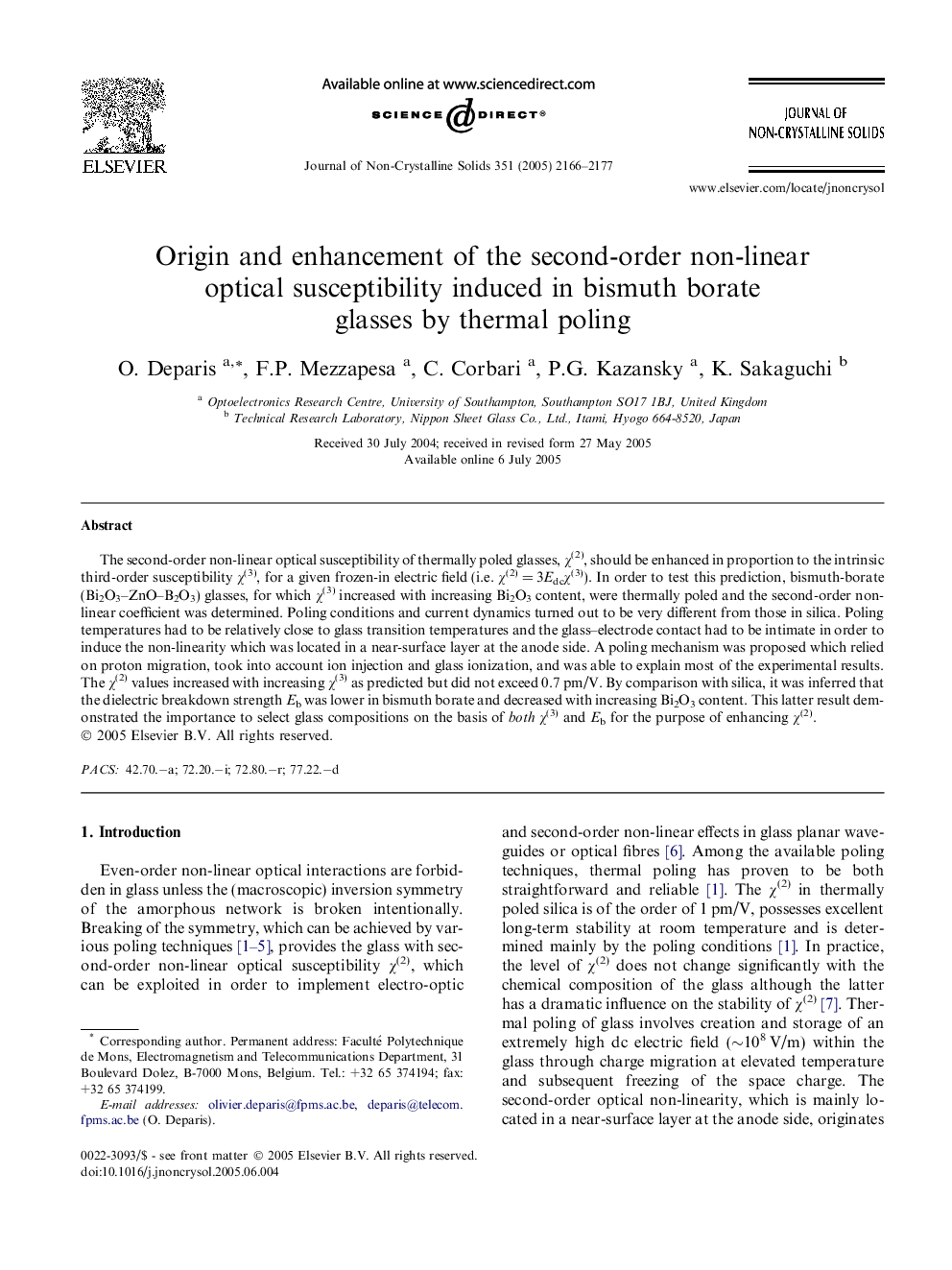| Article ID | Journal | Published Year | Pages | File Type |
|---|---|---|---|---|
| 1484376 | Journal of Non-Crystalline Solids | 2005 | 12 Pages |
Abstract
The second-order non-linear optical susceptibility of thermally poled glasses, Ï(2), should be enhanced in proportion to the intrinsic third-order susceptibility Ï(3), for a given frozen-in electric field (i.e. Ï(2)Â =Â 3EdcÏ(3)). In order to test this prediction, bismuth-borate (Bi2O3-ZnO-B2O3) glasses, for which Ï(3) increased with increasing Bi2O3 content, were thermally poled and the second-order non-linear coefficient was determined. Poling conditions and current dynamics turned out to be very different from those in silica. Poling temperatures had to be relatively close to glass transition temperatures and the glass-electrode contact had to be intimate in order to induce the non-linearity which was located in a near-surface layer at the anode side. A poling mechanism was proposed which relied on proton migration, took into account ion injection and glass ionization, and was able to explain most of the experimental results. The Ï(2) values increased with increasing Ï(3) as predicted but did not exceed 0.7Â pm/V. By comparison with silica, it was inferred that the dielectric breakdown strength Eb was lower in bismuth borate and decreased with increasing Bi2O3 content. This latter result demonstrated the importance to select glass compositions on the basis of both Ï(3) and Eb for the purpose of enhancing Ï(2).
Related Topics
Physical Sciences and Engineering
Materials Science
Ceramics and Composites
Authors
O. Deparis, F.P. Mezzapesa, C. Corbari, P.G. Kazansky, K. Sakaguchi,
